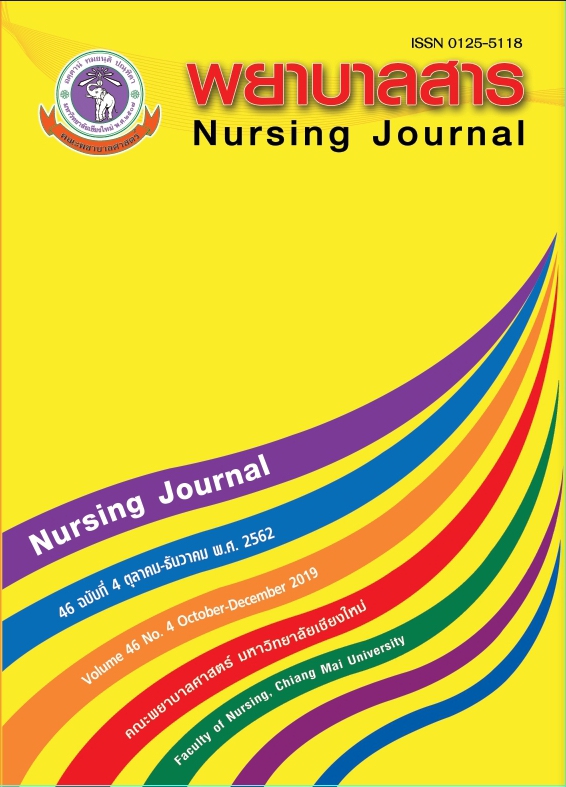Teaching Skills of Nursing Instructor in Using High Fidelity Simulation Scenario
Keywords:
teaching skills, nurse instructor, scenario, high fidelity simulationAbstract
Using high fidelity simulation scenarios in teaching and learning is a new trend in health science disciplines that provides students meaningful learning, knowledge acquisition, building of tacit knowledge, and the development of self-confidence. For instructors, it contributes to the effective design of teaching, improves their self-esteem as a knowledgeable and experienced person, and provides them with academic teaching objectives. However, using high fidelity simulation scenarios is a new innovation with which the majority of nursing instructors are unfamiliar. Therefore, nursing institutions should prepare nursing instructors with the skills to use these methodologies, starting with the creation of virtual scenarios that are consistent with the ongoing demands of learning, teaching within a high fidelity simulation scenario, and summarizing to link theory and nursing challenges to clinical practice, now and into the future.
References
simulation in nursing education. Nursing Education Perspectives, 36(6), 401-402.
Burgess, A., Black, K., Chapman, R., Clark, T., Roberts, C. & Mellis, C. (2012). Teaching skills for
students: Our future educators. The Clinical Teacher. 9, 312-316.
Cooper, J.B. & Taqueoti, V.R. (2008). A brief history of the development of mannequin simulators
for clinical education and training, Postgrad Med Journal, 84(997), 563-570.
Eyikara, E. & Baykara, Z.G. (2018). Effect of simulation on the ability of first year nursing students
to learn vital signs. Nurse Education Today. 60, 101-106.
Groom, J.A. & Sittner, B.J. (2014). NLN/Jefffries Simulation framework: Simulation design
characteristics. Clinical Simulation in Nursing. 10(7), 337-344.
Hosoda, Y. (2018). In search of the ideal clinical learning environment Reflections on
Nursing Leadership, Retrieved July 15, 2018, from www.STTIPub Jambulingam, M. & Anderson, M.R. (2017). Teaching from experience. Reflections on Nursing
Leadership, Retrieved July 17, 2018, from www.STTIPub
Kunaviktikul, W. (2015). Teaching and learning in the discipline of nursing in the 21st century. Nursing Journal, 42(2), 152-156. (In Thai)
Kable, A.K., Arthur, C., Levett-Jones, T. & Reid-Searl, K. (2013). Student evaluation of simulation
in undergraduate nursing programs in Australia using quality indicators. Nursing and
Health Sciences. 15, 235-243.
Leighton, K. (2012). Simulation for staff nurses: Reaching everyone!. Clinical Simulation in
Nursing. 8(8), e402.
Lemberger, O. (2018). Finding a better way: Nurses and innovation. Reflections on Nursing
Leadership, Retrieved July 27, 2018, from www.STTIPub
Littlejohn, A. (2012). Simulation to the rescue: Educating emergency/trauma nurses. Clinical
Simulation in Nursing. 8(8), e402.
Lucas, A. & Edwards, M. (2017). Development of crisis resource management skills: A literature
review. Clinical Simulation in Nursing. 13(8), 347-358.
Norman, J. (2012). Systemetic review of the literature on simulation in nursing education. The
ABNF Journal. Spring 2012.24-28.
Ravert, P. & McAfooes, J. (2014). NLN/Jefffries Simulation framework: State of the science
summary. Clinical Simulation in Nursing. 10(7), 335-336.
Rode, J. L, Callihan, M.L., & Barnes, B.L. (2016). Assessing the value of large-group simulation in
the classroom. Clinical Simulation in Nursing, 12(7), 251-259.
Shinnick, M.A. & Woo, M.A. (2015). Learning style impact on knowledge gains in human patient
simulation. Nurse Education Today. 35(2015), 63-67.
Smitten, J. & Myrick, F. (2012). Finding their way: Preparing nurse educators of the future in
human patient simulation. Clinical Simulation in Nursing. 8(8), e413.
Yimyam, S. (2016). Developing simulation model for training clinical skill of health Science students. Nursing Journal, 43(2), 142-151. (In Thai)
Kunaviktikul, W. (2015). Teaching and learning in the discipline of nursing in the 21st century. Nursing Journal, 42(2), 152-156. (InThai)
Downloads
Published
How to Cite
Issue
Section
License
บทความที่ได้รับการตีพิมพ์เป็นลิขสิทธิ์ของวารสารพยาบาลสาร
ข้อความที่ปรากฏในบทความแต่ละเรื่องในวารสารวิชาการเล่มนี้เป็นความคิดเห็นส่วนตัวของผู้เขียนแต่ละท่านไม่เกี่ยวข้องกับมหาวิทยาลัยเชียงใหม่ และคณาจารย์ท่านอื่นๆในมหาวิทยาลัยฯ แต่อย่างใด ความรับผิดชอบองค์ประกอบทั้งหมดของบทความแต่ละเรื่องเป็นของผู้เขียนแต่ละท่าน หากมีความผิดพลาดใด ๆ ผู้เขียนแต่ละท่านจะรับผิดชอบบทความของตนเองแต่ผู้เดียว






